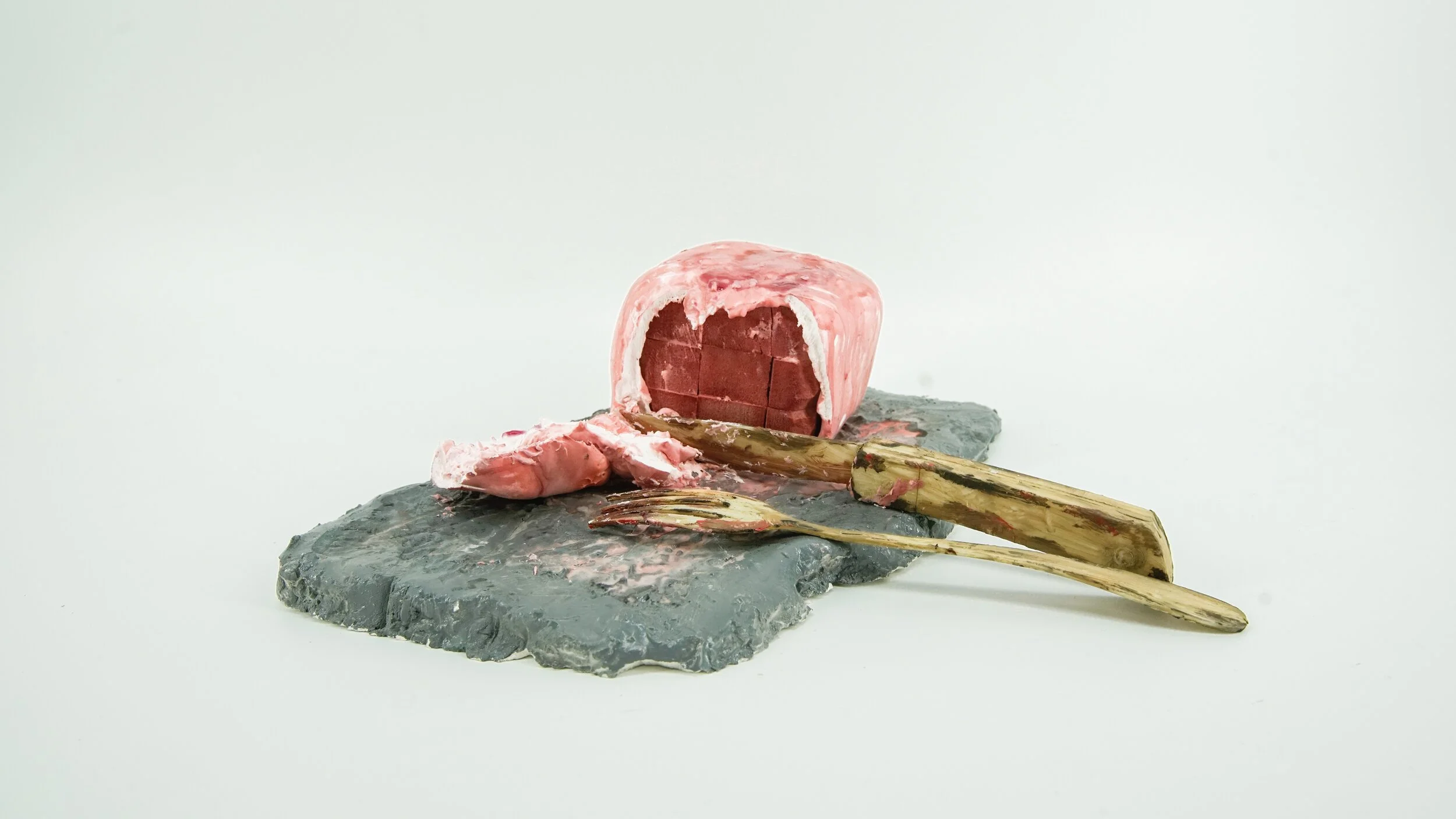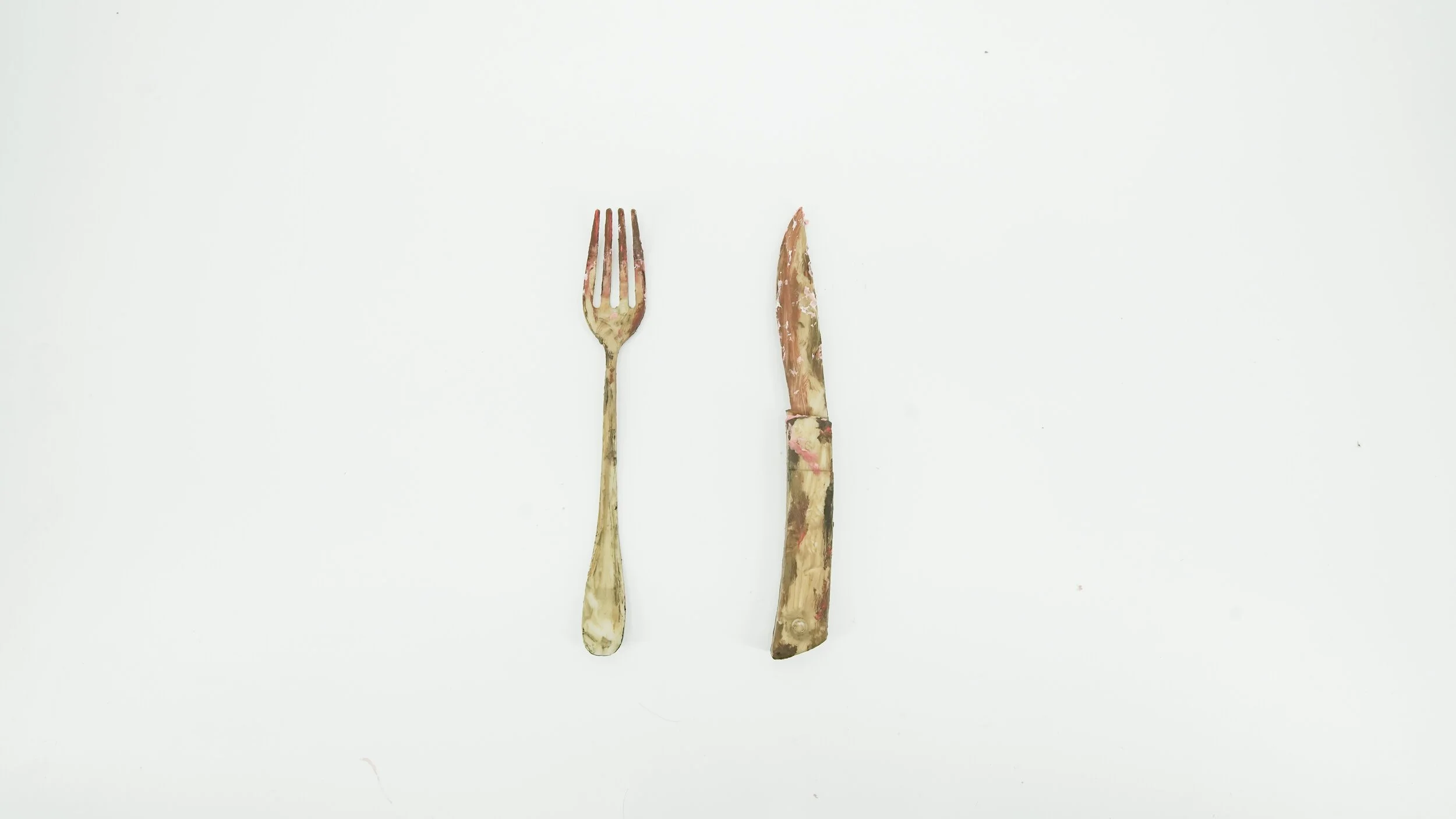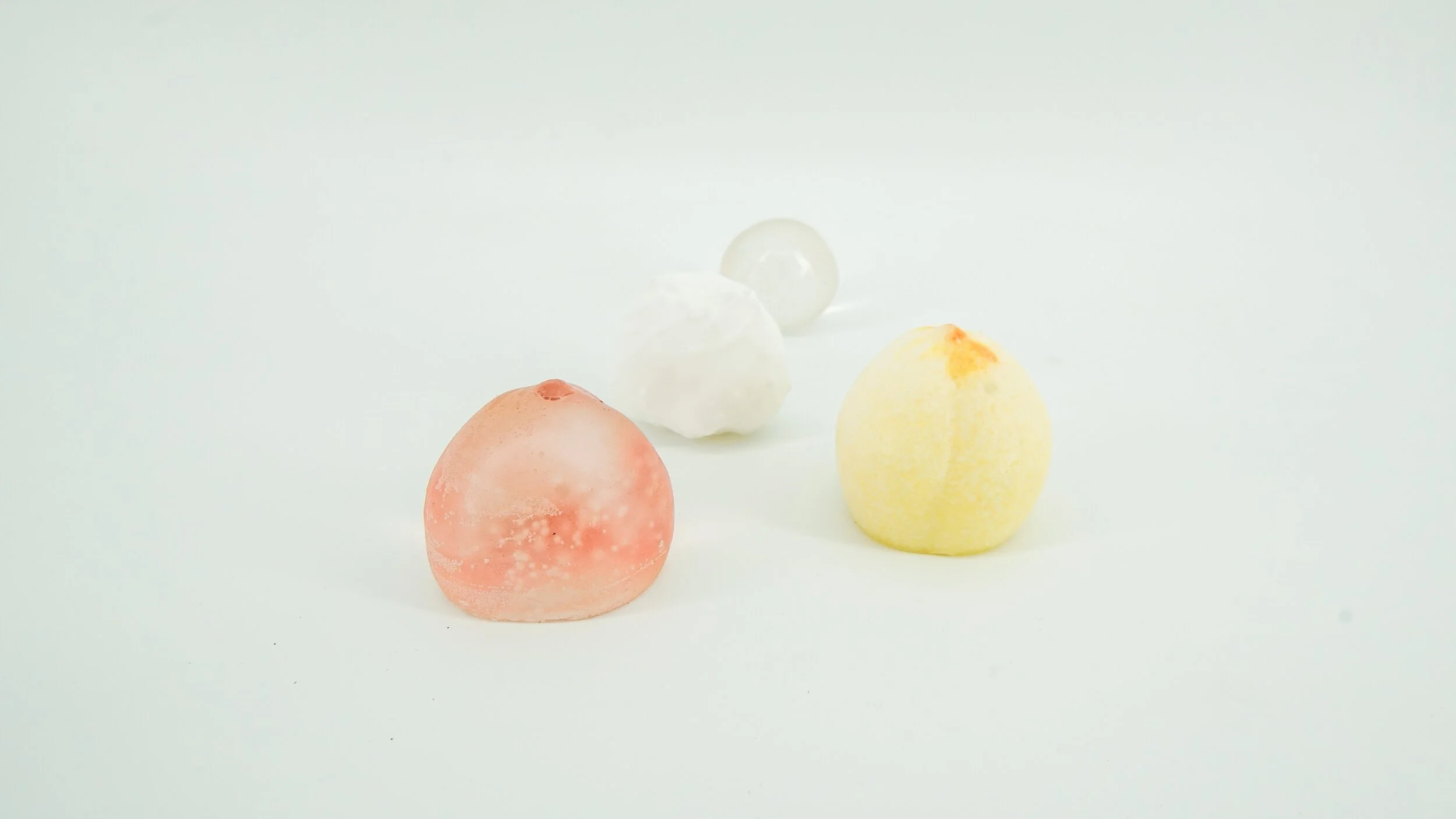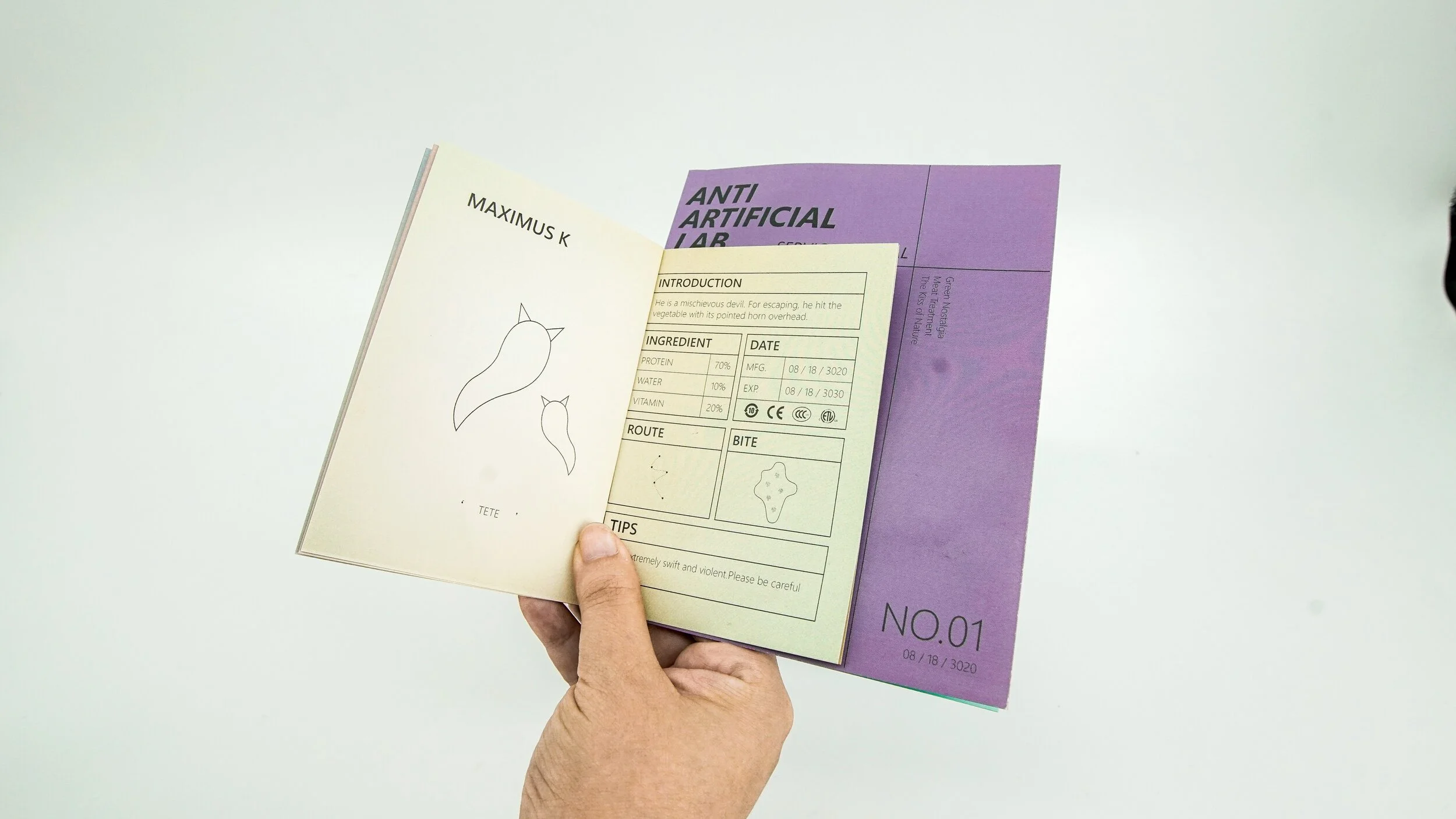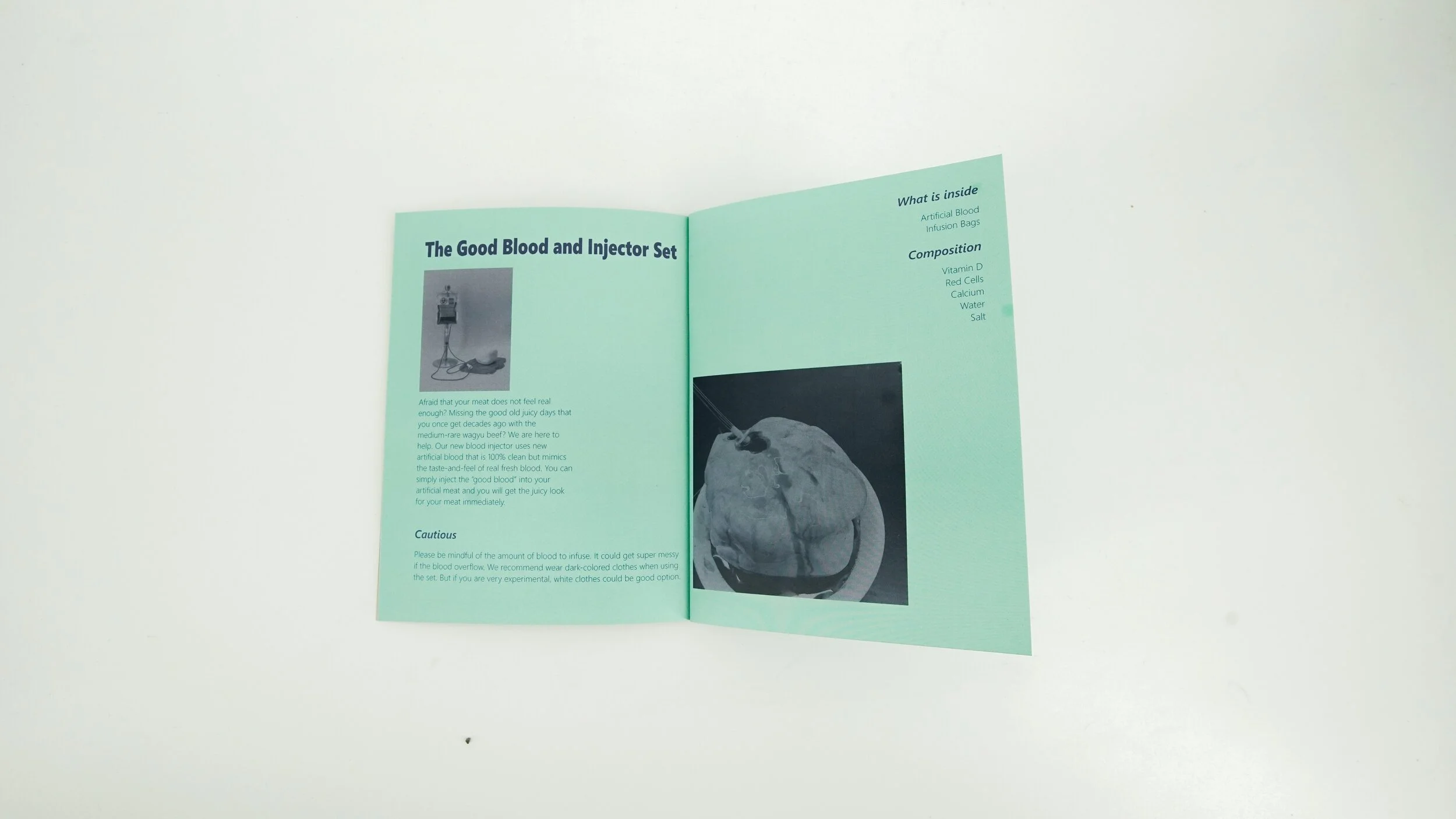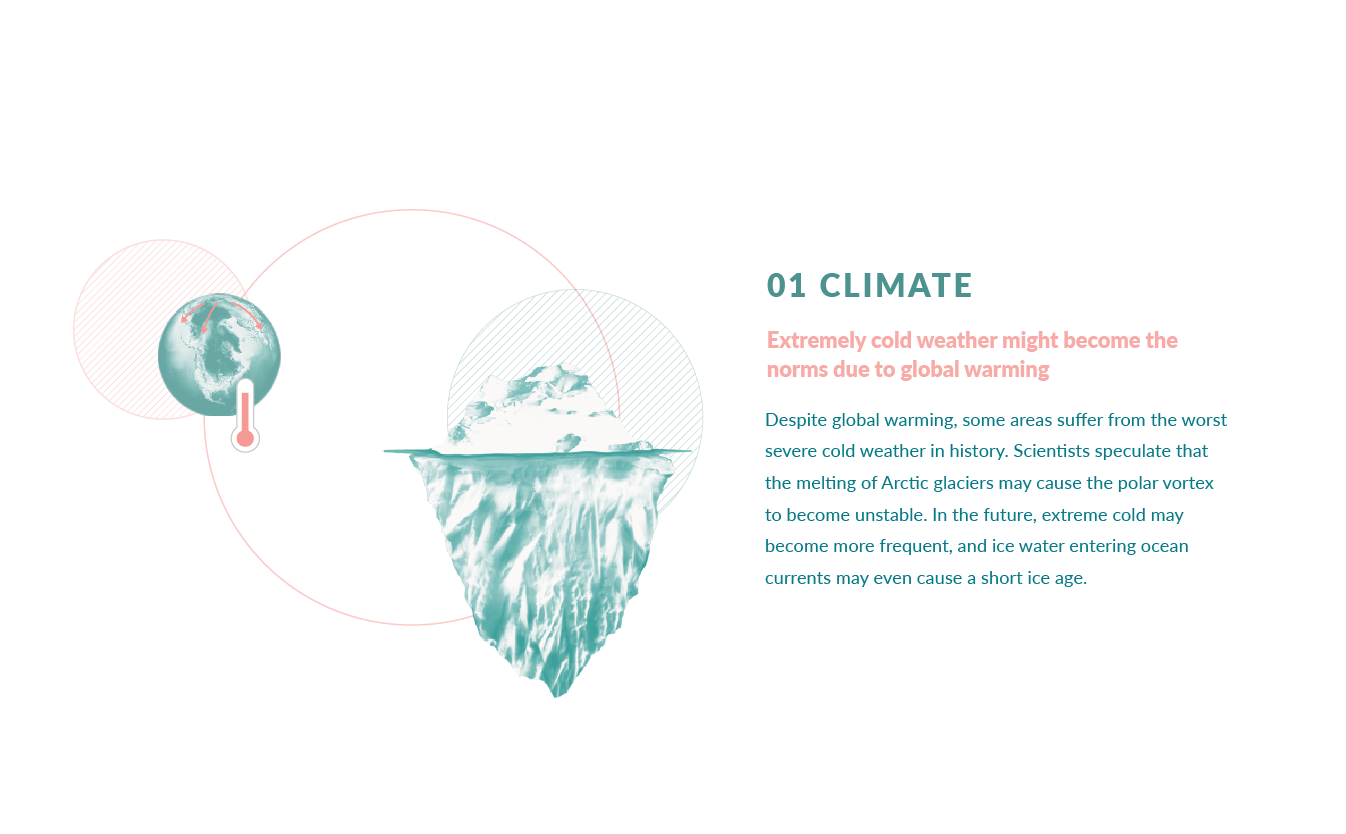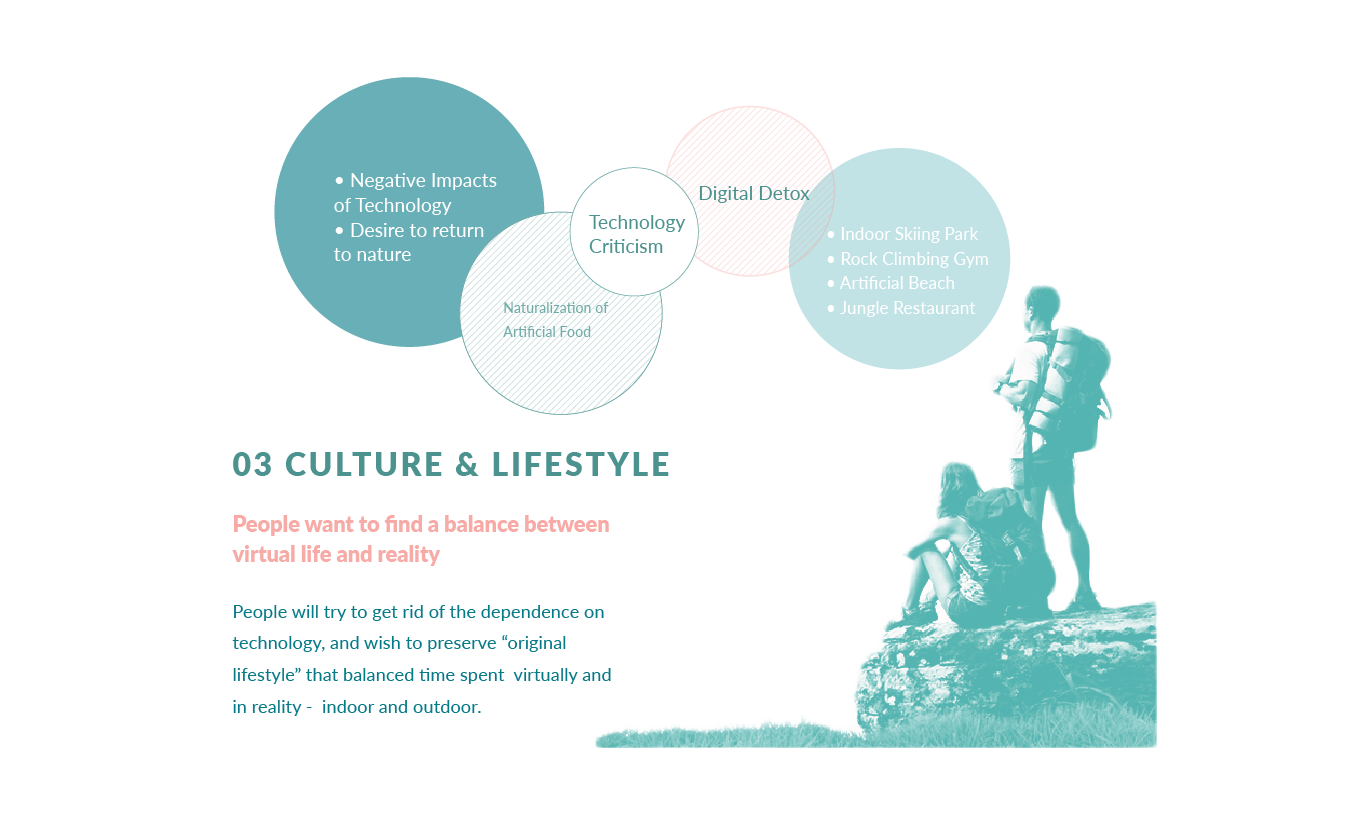Future Food Seasoning
A speculative project to provoke discussions around climate change and industrialism.
This project envisions a future in which natural resources are depleted as a result of climate disruption, and only artificial food is possible to feed the planet. Will humans be satisfied with the “sustenance” - replacement of genuine food that industrial advancement made possible?
Our answer is no. We speculate that the future urbanizers will develop nostalgic feelings for the past and undamaged natural environment - the good old days when they could still enjoy fresh, naturally grown food.
Final Design
A set of future “seasonings” and “tablewares” that return artificially-made food to its natural state.
The products all feature a “de-industrialization” process that brings back bittersweet memories of a better ecological period. This emotion would serve as a motivator for ecological restoration in a post-modern society.
01 — Exploration
Identify Signals
To start, we looked up current trends and signals of emerging technologies and culture in the world and picked the ones most relevant to the food industry. This step helps us to have an initial understanding of the problem space and helps to inspire our next step.
02 — Predictions
Predicting Future trends
Given the current trends and signals related to our topic of research, we conducted analysis and summarized the major trends in the world for shaping the worldview of our project and future design decisions.
03 — Speculations
the Collapsed Mother Nature, Indoor Living, and Artificial Food
Due to global warming, extreme cold weather hit Northern Hampshire at an unprecedented level of intensity and frequency. With the collapse of the ecosystem, humans move indoors and struggle to sustain a livable environment through cutting-edge technology.
Artificially-manufactured fruits, vegetables, and meat become the norms
“Nature” becomes a past term.
The Food Culture: Urbanite Nostalgic for the Natural World
Due to limited space and resources, all food is mass-produced in factories and later distributed to the markets. The highly-standardized food consists of the nutritions and tastes that are the same as traditional meat and fruits.
However, future urbanizers are seduced by nature. Though bio-engineered food feeds the crowd, nostalgic feelings for the taste and feel of “nature” become trendy. People’s vision of “good food” shifts from a consideration of its nutrients and taste to the level of its “naturalness/Genuity.”
04 — Ideation
05 — Reflection
In my past experience as a media studies scholar, I have practiced critical thinking in analyzing media artifacts. The process has been rewarding, as it always allowed me to think more critically about technologies instead of blindly following the trend. Yet, I used to do all that on paper, writing long essays that probably nobody else outside my field will have the chance to look at it.
I am therefore much drawn to speculative design. It uses the narrative power of artifacts to do the critical-thinking job well. This visual and imaginative presence is alone powerful enough to provoke critical thinkings on the possibilities of technologies - good or bad in the remote future. It also allows me to discover the power of design in asking questions rather than solving problems.






